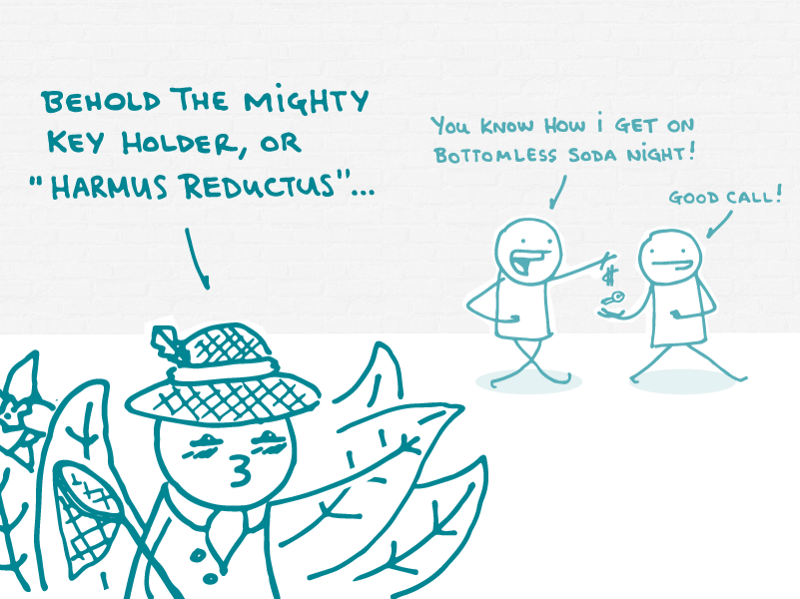
We’ve written a lot in the past about behavior change theories, like Planned Behavior and the Stages of Change. We’ve talked about how behaviors are shaped by the social and physical environments we’re exposed to. And we know that no matter how well we communicate the risks, people will still sometimes do things that are harmful.
That’s why we’re talking about harm reduction this week. It’s a strategy for making risky behaviors a bit less risky — and it’s a great tool for health literacy advocates like you, dear readers.
The idea is that people are going to make their own choices regardless of what lawmakers, health professionals, or anyone else tells them to do. So while we try to help people stop doing dangerous things, our work as health communicators doesn’t always end there. Sometimes, it also makes sense to help people lower their risk of negative health consequences when they don’t plan to — or aren’t able to — stop a risky behavior altogether.
The harm reduction approach was originally developed as a response to substance abuse and its public health implications: think needle exchange programs and supervised injection sites that help prevent infections and overdoses. But harm reduction principles can apply to other things, too — like risky sexual behaviors.
What could it look like to use harm reduction strategies in health communication materials, you ask? Let’s say you’re writing a webpage for people trying to manage alcohol addiction. Of course you will:
- Include encouraging words about how stopping is possible
- Note the health and safety benefits of not drinking
- Offer resources for how to get help
But what about also including content to reduce harm for people who are still drinking too much? You could say:
“It can be hard to stop drinking completely. If you do drink, take steps to stay safe — for example, give your car keys to a friend before you start drinking.”
A harm reduction perspective acknowledges the gray area around risky behaviors — it’s not all or nothing. Even if people are doing something that public health professionals unequivocally agree is dangerous, it’s still possible for them to do it in a less dangerous way. Harm reduction can help us meet people where they are with the information and tools they need.
And doesn’t that sound like just the sort of thing we ❤?
The bottom line: Harm reduction means giving people tools to stay safer when they do things that aren’t 100% safe.
Browse recent posts